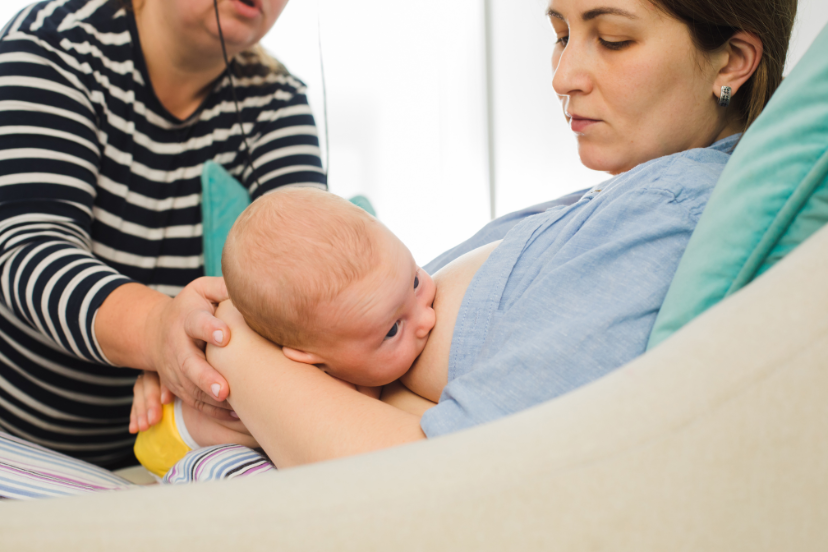Nipple Blebs and Breastfeeding Triumph: Busting the Myths
Introduction
Embarking on the journey of motherhood is a rollercoaster of emotions, and breastfeeding is often a central aspect of that ride. For many new moms, the term “nipple blebs” can be a cause for concern and confusion. In this detailed guide, we’ll unravel the mysteries surrounding nipple blebs and their impact on the breastfeeding experience. From understanding what nipple blebs are to practical tips on overcoming associated challenges, this article aims to be your go-to resource. So, buckle up, and let’s delve into the world of nipple blebs and breastfeeding.
Nipple Blebs and Breastfeeding: A Closer Look
Nipple blebs, often referred to as milk blebs or nipple blisters, are tiny, pimple-like spots that can appear on the nipple during breastfeeding. These seemingly innocuous bumps, however, can lead to discomfort and breastfeeding difficulties if not addressed promptly.
What Causes Nipple Blebs?
Understanding the root causes of nipple blebs is crucial for effective management. Factors such as improper latch, inadequate breastfeeding hygiene, and blocked milk ducts contribute to the formation of these pesky bumps.
Identifying Nipple Blebs
Distinguishing between a regular pimple and a nipple bleb can be challenging. Nipple blebs often appear as white or clear bumps on the nipple surface. Learning to identify them early on can significantly impact your breastfeeding journey.
Overcoming Nipple Blebs: Practical Strategies
Addressing nipple blebs promptly is essential for ensuring a smooth breastfeeding experience. Let’s explore practical strategies to tackle nipple blebs head-on.
1. Hot Compresses and Warm Showers
Introducing warmth to the affected area can help soften the skin, making it easier to alleviate nipple blebs. Incorporate hot compresses or warm showers into your routine for relief.
2. Proper Latch Techniques
A correct latch is the cornerstone of successful breastfeeding. Experiment with various latch techniques to find what works best for you and your baby.
3. Hygiene Matters
Maintaining good breast hygiene is vital. Ensure that your nipples are clean, and consider using a mild soap for regular washing. This simple step can prevent nipple blebs from making an unwelcome appearance.
4. Frequent Nursing Sessions
Regular and frequent nursing sessions can prevent the accumulation of milk, reducing the likelihood of blocked ducts and nipple blebs.
FAQs about Nipple Blebs and Breastfeeding
Q1. What exactly is a nipple bleb?
A nipple bleb is a small, painless blister on the nipple surface, often filled with milk. It can lead to breastfeeding challenges if not addressed.
A1. How can I differentiate between a regular pimple and a nipple bleb?
Nipple bleb typically appear as white or clear bumps on the nipple. If you notice such bumps, it’s advisable to consult with a healthcare professional for confirmation.
Q2. Can nipple blebs cause pain during breastfeeding?
Yes, this can lead to pain and discomfort while breastfeeding, making it essential to address them promptly.
A2. What are some home remedies for relieving nipple blebs?
Hot compresses, warm showers, and proper latch techniques are effective home remedies for alleviating nipple blebs.
Q3. How can I prevent nipple blebs from recurring?
Maintaining good breast hygiene, ensuring a proper latch, and incorporating frequent nursing sessions can help prevent the recurrence of nipple blebs.
A3. Are nipple blebs a common occurrence during breastfeeding?
While not everyone experiences nipple blebs, they are relatively common and can affect breastfeeding mothers.
Q4. Should I seek professional help for persistent nipple blebs?
If nipple blebs persist despite home remedies, consulting with a lactation consultant or healthcare professional is advisable for personalized guidance.
A4. Can nipple blebs affect milk supply?
In some cases, nipple blebs may impact milk supply. Addressing the issue promptly and seeking professional advice can help mitigate any potential impact.
Q5. Are nipple blebs contagious or harmful to the baby?
Nipple blebs are neither contagious nor harmful to the baby. However, addressing them promptly is essential for a comfortable breastfeeding experience.
A5. Can nipple blebs lead to other breastfeeding complications?
Untreated nipple blebs can potentially lead to blocked ducts and mastitis, emphasizing the importance of early intervention.
Conclusion
Navigating nipple blebs and breastfeeding challenges requires a combination of awareness, proactive measures, and, at times, seeking professional guidance. By understanding the causes, identifying symptoms, and implementing practical strategies, you can enhance your breastfeeding experience. Remember, you’re not alone in this journey, and with the right knowledge and support, you can overcome nipple blebs and embrace the joy of breastfeeding.




